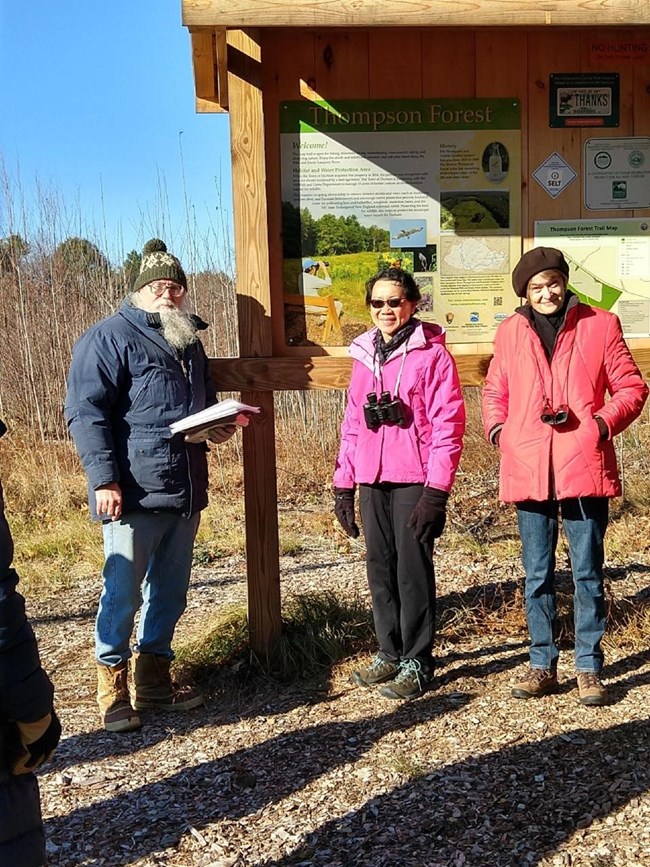Last updated: November 30, 2020
Article
Lamprey River Conservation and Outreach - Lamprey River Outreach Update
by Suzanne Petersen, Lamprey River Advisory Committee, outreach specialist
Outreach is a priority along the Lamprey River. As we like to say, the river is a hidden gem, which is another way of saying many people do not know about the river, yet. Traditional outreach efforts take many forms: presentations and outings with school children, families, and senior citizens; newsletters; local fairs; and an active website. We have a collection of nine DVDs available on-line, including two new ones featuring David Carroll, local artist, author, turtle expert, and MacArthur Foundation fellow.
Due to high demand for public canoe and kayak access during the pandemic, we created a new paddling access map that can be viewed on-line or printed from a home computer. We also recently completed a revision of our popular 18” x 24” recreation map and printed copies are now available. Both maps are available from the www.LampreyRiver.org homepage.
Our children’s book, Chick and Dee-Dee’s Lamprey River Adventure, is now available for free download via our website, www.LampreyRiver.org.
Outreach also includes forming partnerships with community groups. Fruitful partnerships with town recreation departments are creating win-win solutions that help to engage and inform people who are often unfamiliar with the Lamprey River. Partnerships with town conservation commissions have resulted in beautiful kiosks, trail improvements, and a comprehensive natural resource co-occurrence map to guide land conservation efforts. Our Community Grants program has attracted attention from groups with related goals, such as a lake improvement association, the University of New Hampshire, the NH Fish and Game Department/Great Bay Stewards, and a town planning board. When developing partnerships, even with a financial incentive in the form of a grant from us, outreach must also involve listening. Developing relationships and trust for mutually beneficial projects can be an intense but worthwhile undertaking.
Lamprey River Ecology Studies
When the Lamprey River was designated as a state and federally protected river in the mid-1990s, several studies showed that varied habitats were supporting a rich community of species. Birds, fish, amphibians, and reptiles were carefully listed by species. Known rare species and habitats were given special attention. Mammals were listed and noted as abundant, common, or occasional. A very short paragraph in one study noted, “…numerous smaller mammals – shrews, moles, bats, and voles – occupy the river corridor.” With the recognition that large numbers of bats are being killed by white nose syndrome and big wind mills, the need to study bats more closely has moved to the fore. (New Hampshire’s most common bat, the little brown bat, was recently listed as endangered.) Starting with essentially nothing from previous studies, we chose to get baseline data on bats by determining which species were present. We chose seven sites in four towns (Epping, Lee, Nottingham, Raymond) and each site offered different habitat features. Researchers from Normandeau Associates installed ultrasonic acoustic detectors for two nights at each site. Special software provided initial identifications. Any identification that did not meet clear criteria for reliability was analyzed by an expert.

Photo by RH Lord
We were thrilled by the results. Of the eight species expected in New Hampshire, the researchers were able to confirm the presence of seven species. The eighth species, the northern long-eared bat that is federally listed as endangered, could not be confirmed; though it could not be ruled out at two sites. The study did not indicate how many bats of each species were present at each site, only if the species was present. As a bonus, the report noted that all species of expected bats occur with greater frequency along the Lamprey River compared to recent (2015-2017) statewide results.
Lamprey River Land Protection
Good things come to those who wait; habitat creation, trail work, and signage at the 54-acre Thompson Forest in Durham, NH are now complete. The last project completed is likely to be the first thing that visitors notice: the informational kiosk.When the Thompson Forest was put into conservation in 2016 (including funding support from the Lamprey River Advisory Committee), significant work had to be done. The abandoned cow pasture was overgrown with invasive weeds. It needed to be cleared and replanted with native plants and saplings that would be beneficial to wildlife. The property was not pretty that first year. The next summer, it looked slightly better, but still not picturesque. Two summers later, the old field bloomed into radiant color and buzzed with pollinators.

The new kiosk, officially completed on Nov. 16, 2019, captures and celebrates some of that rebirth. Ellen Snyder, the land conservation steward for Durham, and Dick Lord, long-time LRAC member, offered remarks before Ellen led the group on a guided tour. The group learned about the wildlife management plan, invasive plants that are being removed, and why structured brush piles are important. Participants walked the 1.2 mile scenic trail and visited the river-side picnic area on the Lamprey River.The LRAC has contributed expertise and funding to protect 3,743 acres along the river.
Return to Main Article
